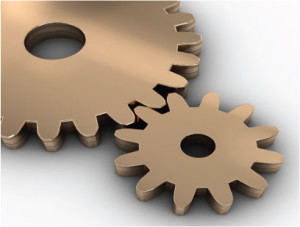 When bigger is better:
When bigger is better:
I often see production jobs that would benefit from a larger sheet size especially in a large volume run. Most companies keep inventory of different size metal sheet for their production and machine requirements, but the problem is that material inventory takes up valuable floor space. If you then need to separate the material, not just by thickness but by size format as well, then this takes up even more space.
The bottom line: 9 times out of 10 the larger sheet size will deliver a higher effective yield (up to 10%); and you will need less of the larger sheet size as well.
With the cost of the material making up most of the cost per part, it makes sense to size the raw material correctly for your production. Naturally, you will need a larger format machine to accommodate the larger sheet size, but the benefits can be substantial in terms of material yield savings, the purchasing leverage of ordering a single sheet format and the floor space savings from having to store only one size format.
If you are looking into a material storage and retrieval system, optimizing the material formats will also have an impact on reducing the size and investment cost of the overall system.
When smaller is better: sizing press brakes correctly for your production
When it comes to bending parts however, I see the flip side of the effects of running production on a machine that is too large for the application. Yes, if you need the table size and tonnage for the parts there is no question you need a larger brake. When you see a small sheet metal part run on a press brake that is either too large in the bed and ram or in tonnage, then you see the flip side of running with equipment that is too large. Much of the speed and acceleration of the ram and back gauge is proportional to the size of the mass that is being moved. The larger the mass the slower the speed and acceleration; the smaller the mass the quicker the speed and acceleration.
A smaller brake will typically outpace a larger brake by as much as 2 times more bends per unit of time due to the increased speed and acceleration of both the ram and the back gauge.
With press brakes typically being the bottleneck in production flows, it makes sense to size the press brakes correctly for your production. Smaller press brakes are not only 2 times more productive; they take up much less floor space and can be moved easily to where the demand is the highest on the shop floor.
By Frank Arteaga, Head of Product Marketing, NAFTA Region
Bystronic Inc., Elgin, IL – Voice.bystronic@bystronic.com
